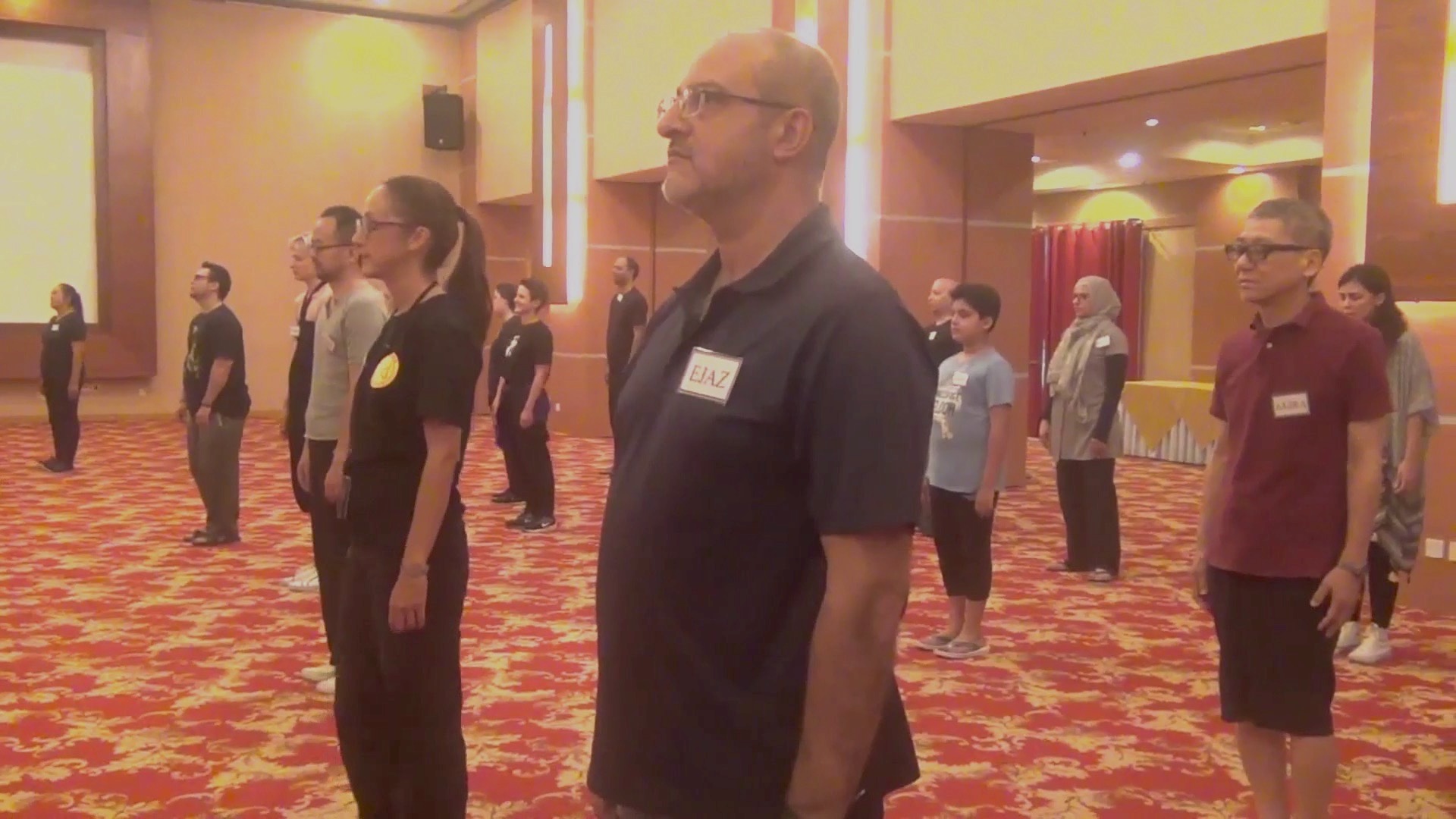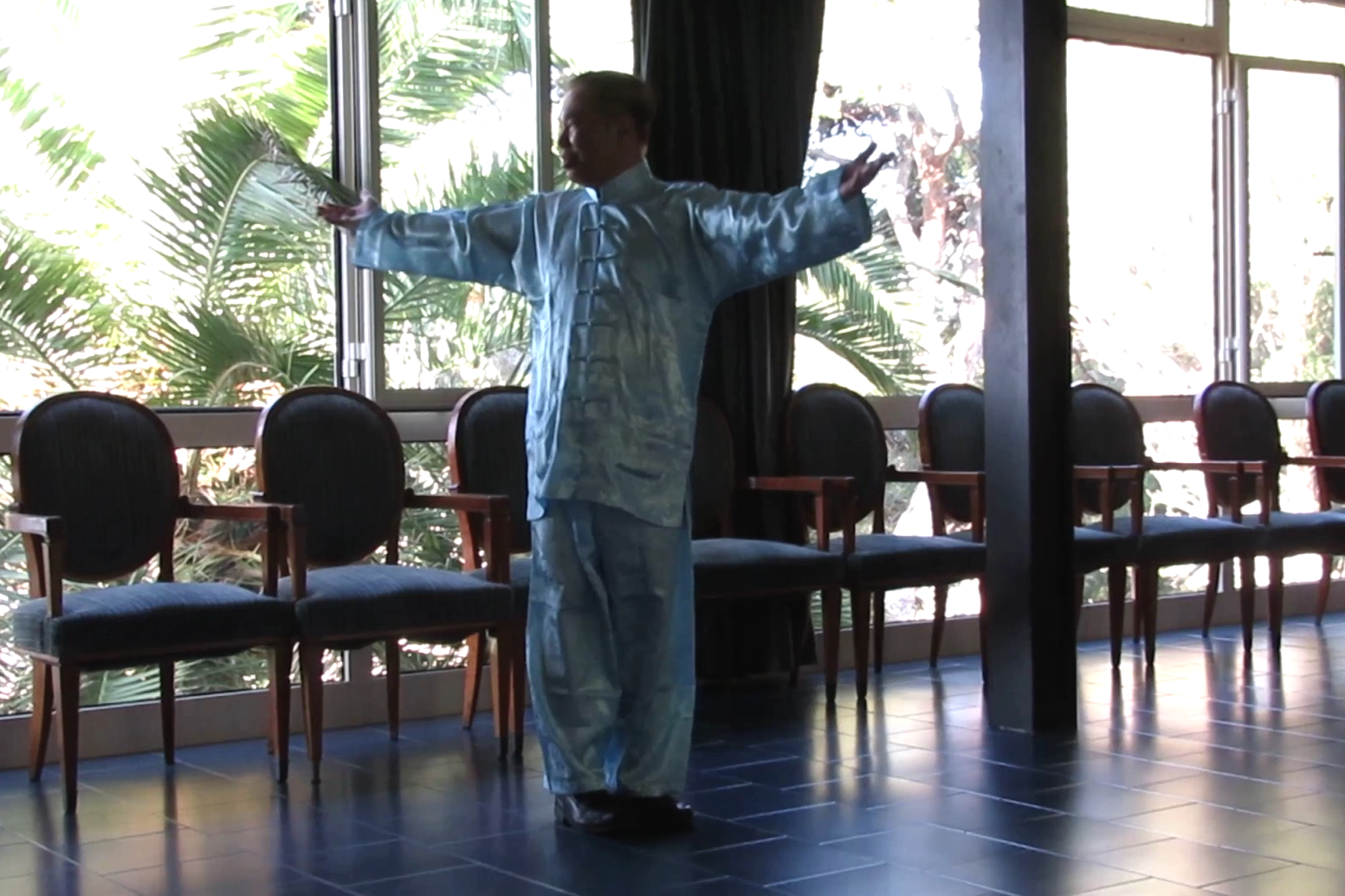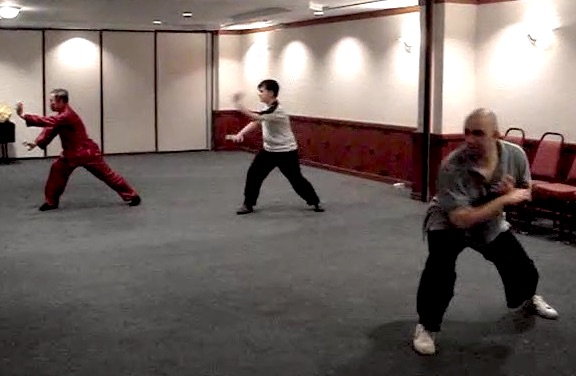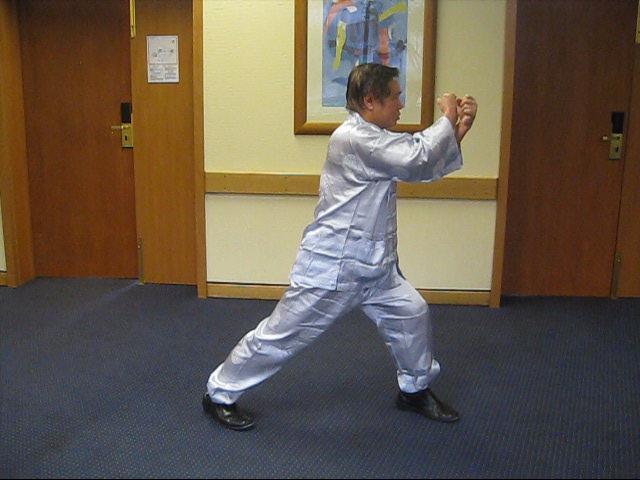SELECTION OF QUESTIONS AND ANSWERS
SEPTEMBER 2019 PART 3

Chi Kung State of Mind
Question 1
You have mentioned a chi kung state of mind. Can you please tell us what is this chi kung state of mind?
— Luis, Portugal
Answer
The term “chi kung state of mind” was coined by the great chi kung master, Sifu Yan Xin of China recently. In the past, masters used terms like “entering silence”, “entering Zen” and “entering Tao”. In Western culture, it is entering into a heightened level of consciousness.
There are different levels of a chi kung state of mind, but the most fundamental is to be relaxed and to be focused at the same time. Entering into a chi kung state of mind, or to be relaxed and focused, is the required condition to practice chi kung or any internal art. If one is not relaxed and focused, he may perform chi kung techniques as gentle physical exercise. This, in fact, is what most people today who say they practice chi kung, are doing.
When a person is relaxed, he can have better result than when he is tensed. When he is focused, he can have better result than when he is distracted. Because of exponential progression, to be relaxed and to be focused enable the practitioner to be better not just twice, but four times.
When one practices chi kung, he also develops internal force. A person with internal force can produce better result than another person without internal force.
A chi kung practitioner also develops mental clarity in practicing chi kung. Mental clarity is similar to but different from being focused. One can have mental clarity but is not focused, and vice versa.
Hence, when one practices chi kung, he is relaxed, is focused, has internal force and has mental clarity. Because of exponential progression, a chi kung practitioner is 16 times better than a non-chi kung practitioner. But genuine chi kung is very rare today. What most people practice is gentle physical exercise using chi kung techniques.
Question 2
The most frequent question my students ask during the current summer heat is as follows: Is there a chi kung exercise that helps to cool down, when it’s hot outside?
— Sifu Leonard Lackinger, Shaolin Wahnam Austria
Answer
Any chi kung exercise can help a person to cool down when it is hot. Chi kung is meant to harmonize yin-yang. When it is too hot or too cold, it is too yang or too yin; hence practicing chi kung will cool a person down or warm him up.
Please note that when it is too cold, like when I was in Finland in winter, it is regarded as too yang. Yang represents the obvious, like being cold in winter, and yin represents the opposite, which is sometimes not known to the public.
Bone Marrow Cleansing may cool a person down if he is too hot. One should not practice it, or any chi kung exercise, if he over-trains. For you, you can practice Bone Marrow Cleansing everyday if you are not over-trained, but it may not be necessary to do so. At your high level, you will know if you over-train.
One-Finger Shooting Zen and Lifting the Sky are excellent exercises to harmonize yin-yang. If it is too hot or too cold, a practitioner will feel more comfortable when he practices One-Finger Shooting Zen or Lifting the Sky. It will cool him if it is too hot, or warm him if it is too cold. It is no surprise that we teach these exercises at the beginning of a person's kungfu career.

Carrying Mountain
Question 3
If I remember correctly, you used to teach Carrying Mountain of 18 Lohan Hands with the palms facing downwards. In recent videos I saw that you used to have your palms facing upwards. Was there a change in the pattern that I should also adopt in my teaching?
In Turning Head why do we make a short pause when we come back to the starting position?
Practicing on the mind level, I experienced both spontaneous reactions. Sometimes the chi would lead me from one side directly to the other. Sometimes there would be a short spontaneous pause. What is the reason for the pause?
Answer
Carrying Mountain should have the palms facing upwards, and there is a short pause after each movement in Carrying Mountain as well as in Turning Head. I may have modified the palms or the pause for expedient means.
The pause is meant for students to get ready for the next move. It is also meant for chi to flow. As you are at a master's level, you may practice any chi kung exercise the way it is best for you.
Teach it or practice it in whatever ways it suits you. Chi kung is meant to enrich our lives, not to enslave us.
Question 4
If we would use Reversed Breathing as a standalone exercise, without the intention of starting the Forceful Small Universe, what would the visualization look like?
Answer
Reversed Breathing, or any chi kung exercise, should be practiced as it has been taught. There is no visualization in Reversed Breathing. But, if we use Reversed Breathing to bring chi up the spine from the hui-ying vital point to the bai-hui vital point, we may visualize chi going up the spine.
When a person has known the norm very well, he may make a modification if the situation warrants it.
All our kungfu and chi kung exercises are passed down to us as a legacy, which give us a lot of benefits and we treasure them dearly. When a person has reached a master's level, he can modify any exercise for the situation, but he must know why he makes the modification. He must also know the norm of the exercise.
A gross mistake is when a "master" makes modifications without knowing the reasons. A good example, which my sifu, Sifu Ho Fatt Nam, often mentioned, was when a "master" changed his kungfu to kungfu-do in the hope of becoming more combat efficient. He threw away gems for stones.

Grandmaster Lam Sai Weng was famous for his tiger claws
Question 5
It has been long time we have met, but I am still reaping great benefits from your teaching. Thank you very much.
— Sifu Pavel Macek, Czech Republic
Answer
It is great to hear from you. I am proud that you are continuing the wonderful lineage of Wong Fei Hoong and Lam Sai Weng.
Question 6
My question is about programming of daily practice of “Internal Exercises” for different levels of practitioners – beginners, intermediate, and advanced.
Answer
Your questions are always interesting.
Irrespective of whether the students are beginners, intermediate or advanced, an important principle is not to over-teach. As teachers who always have the interest of students at heart, we often teach them more than what they can benefit.
Another important principle which I often remind my instructors is not to confuse my intensive or regional courses with their regular classes. New Shaolin Wahnam instructors often teach their regular classes the way I teach in my intensive or regional courses. My intensive or regional courses are intensifed. I have to teach in a few days in an intensive course, or a few hours in a regional course, what a certified Shaolin Wahnam instructor will teach his students in a few months.
In my answers I shall regard your students in regular classes.
Here are a few basic principles, irrespective of whether the students are beginners, intermediate or advanced.
1. A class or lesson must be complete by itself, though it may be a part of a longer training. For example, the training may consists of 5 parts, but each part must be complete. It is frustrating to students if they have to wait for another lesson to complete a part.
2. Students must find a class or lesson beneficial. For example, beginning students will find that by following an exercise in a class, they can enhance their longevity.
3. Students should find a class or lesson interesting. Humor is a good way to make a class interesting. Another way is to approach a topic from a new perspective.
4. The class or lesson must be systematic. It is good teaching philosophy to presume that students do not know the system. If they know, it is good revision for them, or they will deepen their skills in the system.
5. The class or lesson must be progressive. For example, if there are five processes -- 1, 2, 3, 4 and 5; the lesson should be taught as 1, 2, 3, 4 and 5, not as 2, 3, 1, 4 and 5, or as 2, 5, 1, 3 and 4. The teacher should not stay too long in any one process.
6. It is helpful to differentiate between techniques and skills. Students usually learn techniques, which they can learn from good books or videos. In chi kung and kungfu, it is learning skills that is important.

Iron Wire is a very powerful set
Question 7
How would you program the following exercise, please?
(a) Beginners -- "moving" - "Lifting the Sky" and similar exercises. I also teach and practice a set called "Eight Internal Exercises for Longevity Cultivation", similar to "Eighteen Lohan Hands". "Still" -- Wuji stance.
(b) Intermediate -- "moving" - "One Finger Zen". I also teach and practice a similar set called "Twelve Bridges". "Still" -- Horse stance, or Golden Bridge.
(c) Advanced -- "Iron Wire Set". "Still" – meditation.
Answer
(a) Beginners
A useful methodology is first to teach the form of the exercises. When beginning students are quite familiar with the form, they can progress to energy flow.
(b) Intermediate
First teach the form of "One Finger Zen" or of "Twelve Bridges". When they are familiar with the form, progress to internal force.
Ensure that students get the form of Horse-Riding Stance and of Golden Bridge correct. They must be relaxed. Progress gradually. Most students initially cannot get the form correct, or cannot relax for about 3 minutes. Stance training is a relaxation exercise, not an endurance test.
(c) Advanced
It is important that students progress gradually. Iron Wire, if practiced correctly, is a very powerful set. It is recommended that students practice only one section of the set, and when they can practice it well, they can progress to the next secion.
Question 8
Would it be beneficial to include "softer" exercises like "Lifting the Sky" before "One Finger Zen" or "Iron Wire" as warm-up?
Answer
In kungfu it is not necessary to "warm up". Students should be ready to respond to any combat situation immediately. Nevertheless, Lifting the Sky is a good exercise to start with.
Editorial Note: Sifu Pavel Macek's questions will be continued at October 2019 Part 1 issue of the Question-Answer Series.
LINKS
Selected Reading
- Courage and Confidence in Teaching and Healing
- Entering into a Chi Kung State of Mind
- Internal Force versus External Force Training
- Before the Minister Arrives
- Enchanting Riverside at St Antonio
